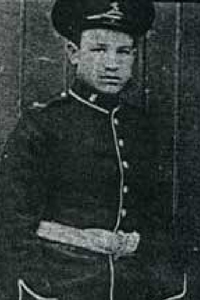3rd February 1915
There was grenade practice for the 15th Brigade. Gleichen watched from the sidelines. At the same time a rather grim G.C.M was being held in Bailleul. G.C.M. stands for General Court Martial.
Early in the morning of the 28th January 1915 panic had coursed through the Cheshire’s forward trenches when two Germans penetrated their defences in Trench 11b, having slipped past the sentries. This kind of thing had been happening throughout January and O.C.’s had had enough.
According to the 15th Brigade’s diary, eleven men were arrested but it was the senior man, 24 year old Corporal George Henry Povey, who was singled out to be made an example of. His Corporal rank is mistaken as Lance Corporal in the 15th Brigade’s war diary. The diary also states, rather bluntly, that he was shot and the others were sentenced to serve between 5 and 10 years penal servitude. There’s absolutely no mention of the original event in the 15th Brigade’s diary entry for the 28th January.
The CWGC records that he died on 11th February 1915. But looking at the register it records 10th February as his date of death. Everywhere else I can find on the internet cites the 11th February as his date of execution. So why did the 15th Brigade’s war diary say he was shot. Perhaps the diary was written at a later date?
This article explains the story in much more detail and claims he was sentenced on the 8th and shot on the 11th February 1915. The account also contradicts the of number men quoted by the 15th Brigade’s diary – it claims there were only 4 men as well as Povey who were arrested. I’d like to see more primary evidence as the website this article quotes as its source is no longer in existence.
Povey was one of the 306 men executed for desertion or cowardice in the First World War, all of whom were pardoned in 2006 by the British Government.
